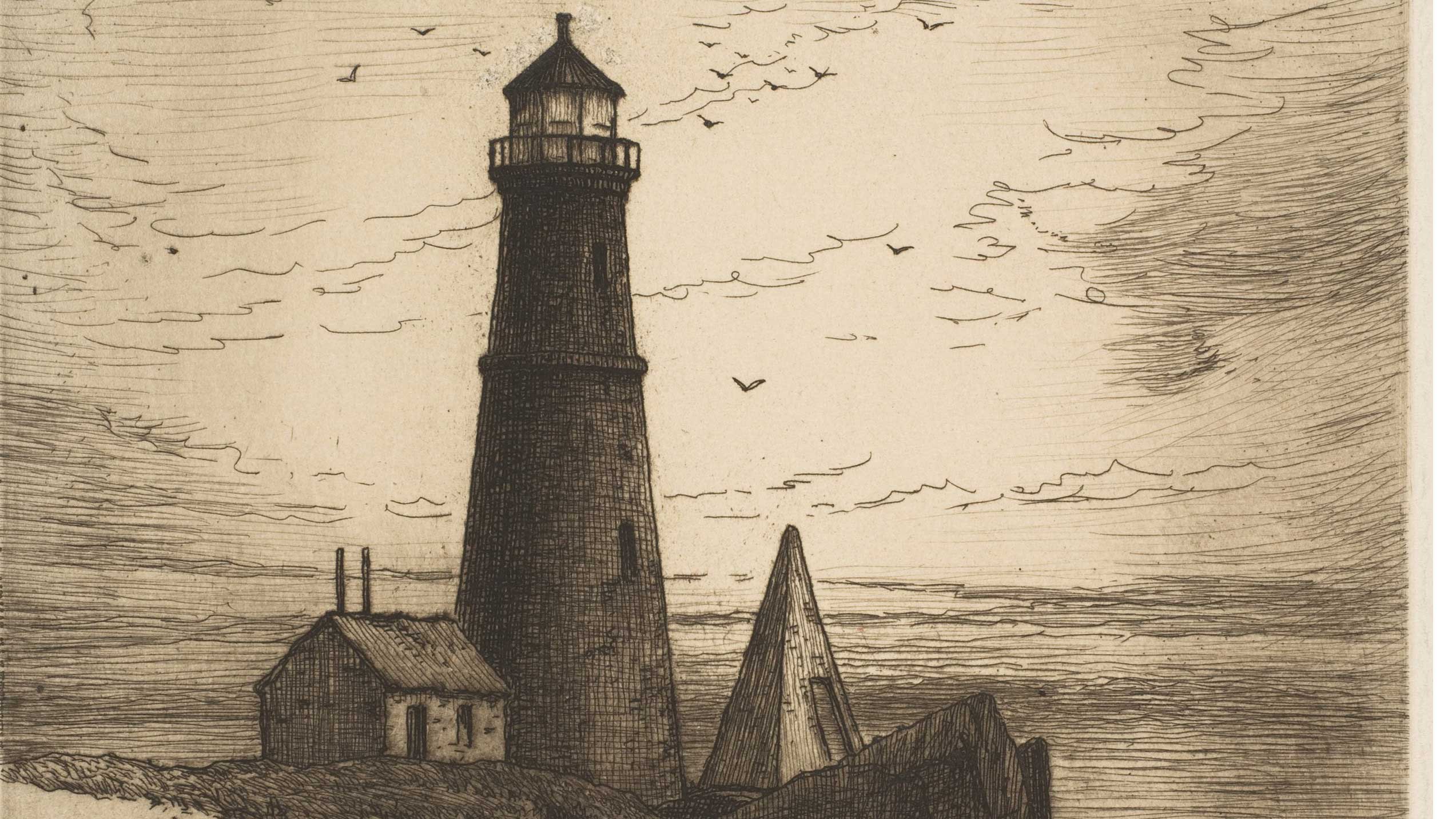Is the lighthouse, as Carl Jung seemed to think, the individual consciousness that “kindles a light in the darkness of mere being”? These tall, austere towers have, after all, been beacons of hope, signals of shore and home; built near the most dangerous of waters, their flashing light holds out the hope of not perishing, and seafarers have relied on them for centuries.
And yet, they are also deeply paradoxical, liminal structures, belonging neither to the land nor the sea, built only after several horrific sea disasters had already occurred in the regions where they stand. They have saved innumerable lives, but their keepers have been in constant mortal danger, paying a steep price for providing an invaluable service, and living in complete and often abject isolation.
Indeed, few structures that were built for a mere utilitarian purpose can evoke such complex human emotions as these lonely outposts have done, especially in literature. Robert Louis Stevenson is said to have found inspiration for Treasure Island from the island of Fidra in Scotland. And yet, it is no coincidence that the Fidra lighthouse was built in 1885 to the design of his father, Thomas Stevenson, and uncles, Alan and David Stevenson, and that his grandfather had been the engineer tasked with lighting up the Scottish coastline. These familial influences are to be found ensconced in the layers of his prose; crucially, the absence of the hope of guidance, illumination and never-ceasing watchfulness in dreaded, lighthouse-less waters. This is seen in Kidnapped, when the narrator, David Balfour, outlines the pure terror of being shipwrecked: “Sometimes the swell broke clean over us; sometimes it only ground the poor brig upon the reef, so that we could hear her beat herself to pieces; and what with the great noise of the sails... and the flying of the spray in the moonlight, and the sense of danger... I could scarcely understand the things I saw.” (In 1880, R.L. Stevenson wrote: “Whenever I smell salt water, I know that I am not far from one of the works of my ancestors.”)
Edgar Allan Poe, on the other hand, envisioned the fate of the lighthouse keeper in his deeply evocative, unfinished work, The Light-House — the plight of those who keep the fire burning while living on the edge of society, bearing loneliness as the price of solitude, whether chosen or forced. As Jazmina Barrera writes in On Lighthouses, “After spending sufficient time inside a lighthouse, who wouldn’t begin to hear a song in the sound of the machinery, a voice in the wind or the waves?”
But was it not Virginia Woolf who arguably imagined lighthouses as sites of contradiction and, therefore, almost as mirrors of what it means to be human? When James, in To the Lighthouse, recalls the “silvery, misty-looking tower” from his childhood “that opened suddenly, and softly in the evening”, it becomes clear that the structure before his eyes now, with its “stark and straight” tower and rocks covered with drying clothes, is the same. “So that was the Lighthouse, was it? No, the other was also the Lighthouse. For nothing was simply one thing. The other Lighthouse was true too.”
Therein, perhaps, lies a fundamental truth of the human condition: like these solitary structures of both light and darkness, the human heart, too, can be two contradictory things at once. Today — August 7 is recognized as Lighthouse Day — might be a fitting occasion to remember that.











